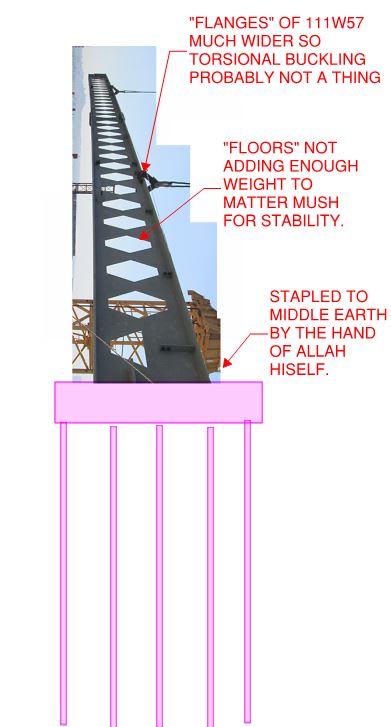XR250 said:
How sad that the developers don’t see it that way.
Part of what is interesting is that the developers for these projects are often
very savvy about structural costs and, in some cases, will be former structural folks themselves. So you'll go to a meeting to show off your wares and find them received to the tune of "this is 4% higher shear wall rebar density than a building like this should have". And back to your cubby hole you go to keep up/down with the Joneses. It's a double edged sword I think. One the one hand, it's a great learning experience working with such sophisticated development teams. On the other hand, it's surely frustrating and/or stifling at times having your client be so savvy structurally.
XR250 said:
And yes, Kootk, if you want to work on one of these buildings, you should go for it.. You are more than qualified.
Thanks for that. I've actually explored this kind of thing on a few occasions with little success. Two factors always come into play:
- Need to move family to an expensive market for paltry pay and;
- On balance these firms have little respect for the "kind of engineering" that my resume reflects. Not even the institutional stuff.
Funny story. WSP is one of these big aggregator firms fueled by pension fund investments etc. Canadian headquartered no less. A while back, they bought a firm at which I was working. I was miffed at the time but decided to view it as an opportunity. So I contacted their NY office which used to be Cantor Seniuk, deities of skyscraper design. They were advertising a bunch of positions and I thought I might be able to finagle some kind of "internal" transfer into the world of mega-projects since we were all basically the same company now. So we had a Skype interview...
1) They administered a couple of test quiz questions. Moment diagrams etc... ridiculous to the point of being offensive for a ten year guy.
2) They liked me and offered me a position in their Manhattan office for $65K. I
actually looked into the viability of that, I wanted it so badly. I would have either had to live on the street in Manhattan or commute in from South Dakota somehow.
3) When I pointed out that I was
already making $115K working for WSP, it became clear that they weren't actually aware that I was a current employee of WSP. And, of course, why would they? The NYC WSP guys neither know nor care what a bunch of hillbillies in one of their Canadian offices are up to. Maybe Toronto...
As you can imagine, the whole thing was pretty awkward and a little disheartening.
I will say though, every-time that I come back to check on this thread, I see the photo a the top and am blown away by the proportions of that building. It is definitely bold and amazing. I wish that I had access to their ETABS model. I'd be curious to know how far you could shift the upper floors to one side before P-delta would kick and she'd wet noodle into the neighboring buildings. Or maybe something that is full width structural like this really isn't ever heavy enough relative to lateral stiffness for P-delta to doom it...






